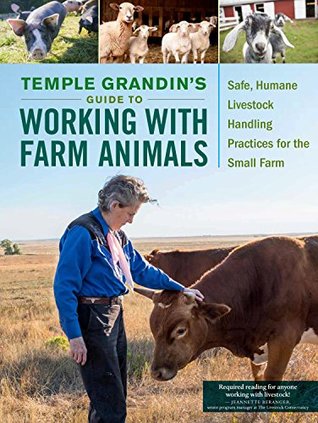Kindle Notes & Highlights
Read between
February 22 - March 12, 2019
Animals never forget a frightening or painful experience.
New things are scary when suddenly introduced, but they are attractive if the animal is allowed to approach them voluntarily.
A sudden or novel sight or sound will cause a grazing animal to quickly raise his head. He will orient toward the stimulus, and his brain will make a decision: “Do I keep looking, run away, or put my head back down and continue grazing?”
The best handlers are often completely silent when cattle are moving through the handling facility. When people learn to avoid loud, unnecessary noise they find that the animals remain calmer and are easier to move.
For numerical measurement, count any frightening or painful events that occur during handling. Examples include the number of percentage of animals that fall, hit a fence, are caught in the wrong position in a restraint device, or vocalize when you restrain them.
Cattle and horses tend to look at novel, potentially threatening stimuli with their left eye. The left eye is connected to the more emotional right side of the brain. Initial careful presentation of a new thing, such as a saddle or trailer, to the right eye (left brain) may help reduce fear.
One study showed that tame cattle and horses that are relaxed around people may lose eye preferences.
the direction of a horse’s hair whorl affects handedness. It will determine which way a horse will bolt when startled...
This highlight has been truncated due to consecutive passage length restrictions.
Since they can’t see around them, they sometimes don’t know where a person is approaching from. When working with sheep, consider the length of the hair around their eyes and adjust your movements accordingly.
Due to their two-color receptors, all grazing animals exhibit dichromatism, which means they are more sensitive to harsh contrasts between light and dark colors.
Animals moving through a facility will often refuse to walk over a shadow or step onto a concrete floor from a dirt floor. The high contrast of the shadow or the flooring color change alarms them.
To perceive depth, grazing animals must stop and lower their heads.
Instead, allow the leader time to put his head down and look things over. Often it takes the animal only 30 seconds or so to determine that the footing is safe.
Some types of animals respond to a pheromone excreted from others of their kind who are terribly frightened.
Firm strokes are calming, but patting may be misinterpreted as hitting. Avoid light tickle touches because they may be scary.
a saddle must have a different “feeling picture” at each different gait. It may have felt familiar and safe at a walk but totally new and scary at a canter. This problem is most likely to occur when training is done too rapidly and each new sensation is introduced too quickly.
Goats are browsers and stand on their hind legs to eat tasty branches.
Different sights, sounds, and other sensory stimuli can trigger reactions from different emotional systems in the brain.
Panksepp calls it panic, but I prefer the term separation distress to avoid confusing it with fear. When a single animal is separated from the herd and starts running around wildly, the separation-distress emotional system has been activated.
Hugging around the shoulders is very positive for people, but it is not positive for dogs.
They form object- or person-specific fear memories and event- or place-specific fear memories.
Fear of wolves and dogs is learned.
For example, dogs may fear the place where they were hit by a car instead of the car that hit them.
Cortisol can lower immune function, and stressed animals are more likely to become sick.
Bulls hand-reared as orphan calves may be the most dangerous because they have not learned that they are cattle.


